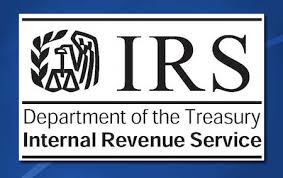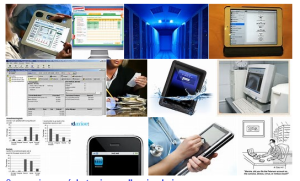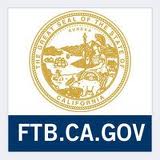 Social Security, Treasury target taxpayers for their parents’ decades-old debts
Social Security, Treasury target taxpayers for their parents’ decades-old debts
On April 10, the Washington Post led with a story that created an uproar and outrage by taxpayers across the country. The story focused on the seizure of tax refunds by the government to repay debt that was, in some instances, decades old.
“Social Security claims it overpaid someone in the Grice family — it’s not sure who — in 1977. After 37 years of silence, four years after Sadie Grice died, the government is coming after her daughter.
Update from Forbes. The SSA has suspended its scope of more than 10 years. Meaning, they will not pursue alleged over-payments on any taxpayer more than 10 years. But, did you know that the government gave itself the right to chase taxpayers for old debts indefinitely. And the easiest way to do it is through an offset. Where you ask? When?
“To be clear, the government has long had the authority to seize tax refunds to pay back certain obligations (more on that in a moment), but in 2008, the rules that limited the time to seize funds were rewritten. The change was made in the Food, Conservation, and Energy Act of 2008 – sometimes called “the farm bill” – since, as you know, Congress is terribly fond of tossing bits of new law into totally unrelated bills (like those credit card reporting requirements inserted into the Housing and Economic Recovery Act of 2008 or how a bill called the Service Members Home Ownership Tax Act of 2009 turned into the Patient Protection and Affordable Care Act). The provision, tucked near the back of the Act, which clocks in at more than a quarter million words, says simply:
(e)(1) Notwithstanding any other provision of law, regulation, or administrative limitation, no limitation on the period within which an offset may be initiated or taken pursuant to this section shall be effective. (2) This section does not apply when a statute explicitly prohibits using administrative offset or setoff to collect the claim or type of claim involved.”
SSA’s announcement might have been a relief to some taxpayers but the law is still on the books. And so long as the law authorizes government agencies to collect on those old debts, taxpayers could be in danger of having their tax refunds seized for years to come.
And remember, that the IRS can go as far as they want to if they suspect fraud, so make sure your taxes and records are in order, and have your taxes prepared by a tax professional, such as a CPA or EA.
GOT QUESTIONS? CALL 619-589-8680.
At US-TaxLaws, we do more than just tax preparation. We review your previous returns. We may just review 1 or 2 years. But if you are an in-home business, we will take a closer look to make sure you are getting all of the deductions your in-home business is permitted. US-TaxLaws is your best source for professional tax preparation and/or financial consulting services.
Personal Tax Preparation Business Tax Preparation Partnership Tax Preparation
Corporate Tax Preparation Incorporation-Choice of Entity Business Support Services
Corporate Compliance Audit Representation Retirement Tax Planning Wills & Trusts Estate Planning Bookkeeping Payroll
http://www.washingtonpost.com/politics/social-security-treasury-target-hundreds-of-thousands-of-taxpayers-for-parents-old-debts/2014/04/10/74ac8eae-bf4d-11e3-bcec-b71ee10e9bc3_story.html
http://www.forbes.com/sites/kellyphillipserb/2014/04/24/payback-is-forever-tax-refund-offset-law-remains-on-the-books/#./?&_suid=139851903245309521199226209964

 The Internal Revenue Service issued another strong warning to guard against phone scams targeting taxpayers
The Internal Revenue Service issued another strong warning to guard against phone scams targeting taxpayers IR-2014-54, April 17, 2014
IR-2014-54, April 17, 2014
 Now that April 15 has come and gone, everyone is writing about tax information, records to keep, and records you can discard. For some it’s just personal tax records. For others, it’s personal and business documents. However, before you go out and purchase electronic media to store records and receipts, please read our March 26 blog,
Now that April 15 has come and gone, everyone is writing about tax information, records to keep, and records you can discard. For some it’s just personal tax records. For others, it’s personal and business documents. However, before you go out and purchase electronic media to store records and receipts, please read our March 26 blog, 

 How the Tax Reform Act of 2014 Will Affect Your Small Business
How the Tax Reform Act of 2014 Will Affect Your Small Business United States Of Taxation 2014: Here Are The Best And Worst States For Consumption Taxes, Total Tax Burden
United States Of Taxation 2014: Here Are The Best And Worst States For Consumption Taxes, Total Tax Burden CHILD AND DEPENDENT CARE EXPENSES.
CHILD AND DEPENDENT CARE EXPENSES. Cost segregation deals with the depreciation of real estate enabling investors to dramatically increase the amount of depreciation they write off every year.
Cost segregation deals with the depreciation of real estate enabling investors to dramatically increase the amount of depreciation they write off every year. Organizations That Qualify To Receive Deductible Contributions
Organizations That Qualify To Receive Deductible Contributions Stopping refund fraud related to identity theft is a top priority for the tax agency. The IRS is focused on preventing, detecting and resolving identity theft cases as soon as possible.
Stopping refund fraud related to identity theft is a top priority for the tax agency. The IRS is focused on preventing, detecting and resolving identity theft cases as soon as possible. Seven significant new income tax law changes went into effect at the beginning of the year as a result of two pieces of legislation:
Seven significant new income tax law changes went into effect at the beginning of the year as a result of two pieces of legislation: File information returns (for example, Forms 1099 for certain payments you made during 2013. There are different forms for different types of payments. Use a separate Form 1096, Annual Summary and Transmittal of U.S. Information Returns, to summarize and transmit the forms for each type of payment. See the
File information returns (for example, Forms 1099 for certain payments you made during 2013. There are different forms for different types of payments. Use a separate Form 1096, Annual Summary and Transmittal of U.S. Information Returns, to summarize and transmit the forms for each type of payment. See the